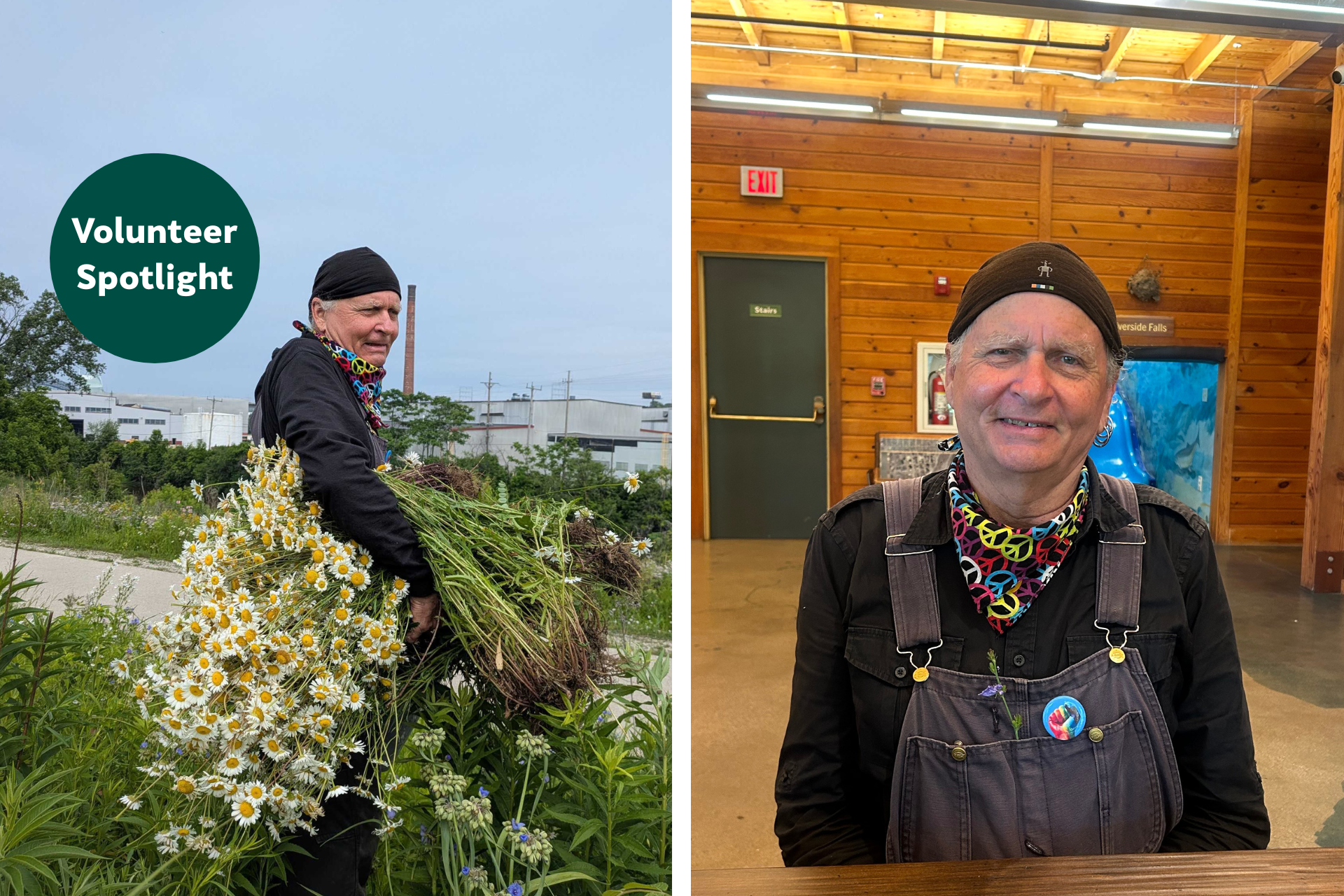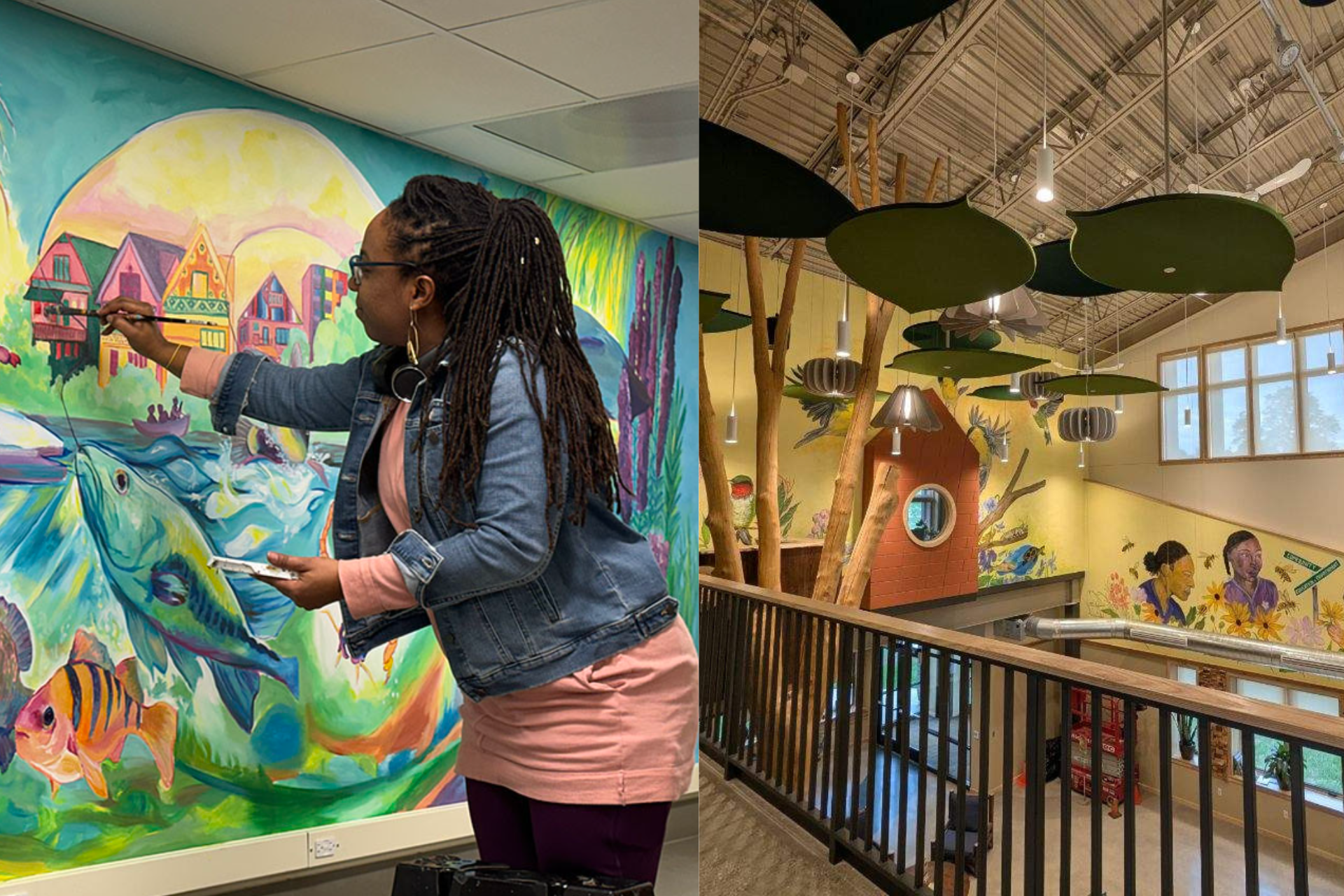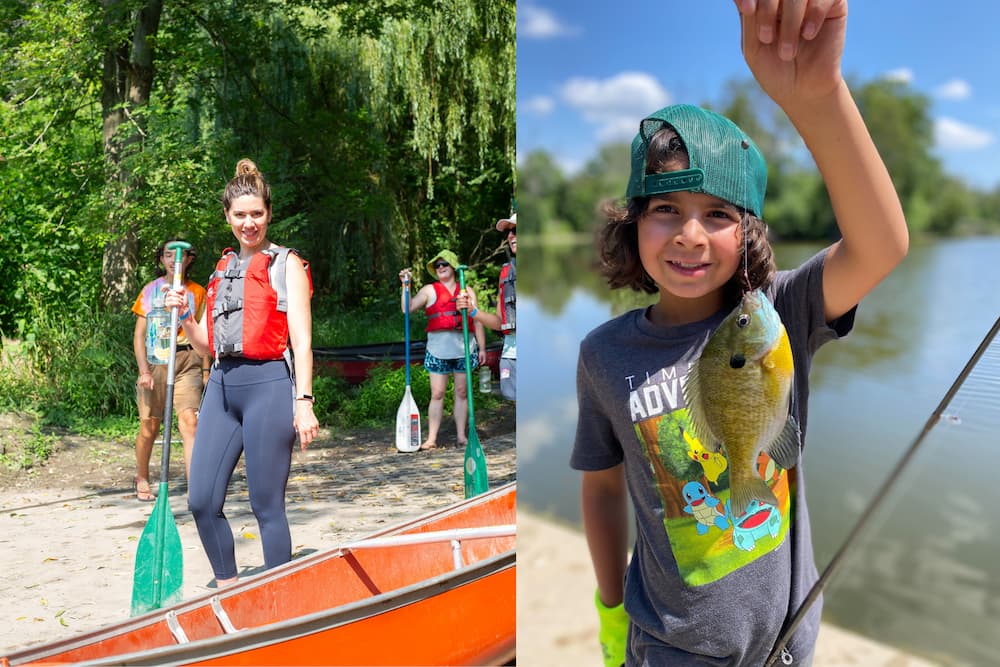Returning Home: A Sturgeon Release Story
If I’m being honest, I couldn’t even visualize a sturgeon in my head prior to working at the Urban Ecology Center. So, when a coworker mentioned there’d be a sturgeon release at UW-Milwaukee’s Great Lakes Research Facility, I jumped at the chance. It sounded intriguing—plus, I’d never heard of a fish release before. Which got me thinking: What exactly do sturgeons do? What is their backstory? And why do they need releasing in the first place? I quickly realized I didn’t have the faintest idea.
The next day, as I pulled up to the site, the Milwaukee River slowly came into view, lazily reflecting back a gray, cloudy afternoon. The air felt cool and crisp, an early hint that summer was finally ready to ease into fall. By the boating dock, I spotted a truck with its tailgate open next to a plastic folding table, scattered with used ice cream pails. Funny, I thought. A small group of researchers and organizers gathered us—a mix of volunteers, myself included—into a circle and gave a brief introduction to the release, explaining the cultural and environmental importance of the sturgeon.
It was then and there that I learned the story of this fish is one of returning home.
A Fight for Survival:

During the late 1800s, a solemn string of events—including pollution, dam construction, and overfishing—wiped out the sturgeon population native to Lake Michigan. These fish once thrived in Milwaukee’s waterways and nearby tributaries, migrating through the region each year. But by the early 1900s, sturgeons had all but disappeared from the Great Lakes, and it seemed like hope for their return was a lost cause.
That all changed in 2006 when the "Return the Sturgeon" initiative was launched. Led by a partnership between the Department of Natural Resources, U.S. Fish and Wildlife Service, and the nonprofit Riveredge, the mission was clear: to restore sturgeon populations to their native habitat. Using a 'cross-stream sensor system,' they tracked sturgeons implanted with passive integrated transponders, or 'PIT tags,' to monitor their migration patterns and measure progress.
According to the DNR, sturgeons prefer spawning in warmer weather when water temperatures can climb up to 50 degrees Fahrenheit or higher. As of this writing, water temperatures this past August ranged from 64 to 77 degrees. There are 29 known species of sturgeon, and while most are found in the ocean, some migrate to freshwater like the ones we were about to release on this mild summer afternoon.
Meeting Miso:
A good friend of mine told me to send him pictures as he excitedly relayed to me that Sturgeons are “prehistoric.” Sure enough, a quick google search revealed that the earliest fossils of sturgeons can be found in rocks dating back to the Jurassic period, about 174 million years ago. I thought about this fact in particular as I walked over to the table and looked down into a “Kemps: Family Size” bucket. Inside, a very dark and bony-backed fish feverishly squirmed against the edges. To me, it resembled a small dinosaur with fins.
As I approached the dock where people were kneeling down to hand-release the fish into the water, the wooden surface beneath my feet wobbled in anticipation. I decided to name my new friend “Miso.” Holding the tiny fish in my hand, I reflected on the past few weeks—how quickly my life was changing in such a short period of time. New city. New job. New apartment. I, too, was finding my way back home.

Depending on their sex, sturgeons can live up to 50 or even 100 years, with females often living the longest. Looking down, the thought occurred to me that it was quite possible the little creature in my hand could outlive me.
I can picture it now: Little Miso swimming around and absorbing the changing seasons as they come and go. Perhaps he will grow to be 7 or 10 feet long, as sturgeons are said to do. Meanwhile, I’ll be living my life on land, making a home for myself while Miso paddles along the shallow waters of Lake Michigan in search of food, warmth, company and a place to call home.
How to Get Involved:

If you're interested in learning more about sturgeons and even having the chance to release one yourself, there's still time to get involved! Milwaukee’s twin festivals, Sturgeon Fest and Harbor Fest, are happening on Sunday, September 29, 2024, in the Harbor District. Sturgeon releases will take place from noon to 2:00 pm. There will also be food, drinks and entertainment provided.
For more information or to register, visit the Sturgeon Fest website today!




.jpg)



.png)
.png)